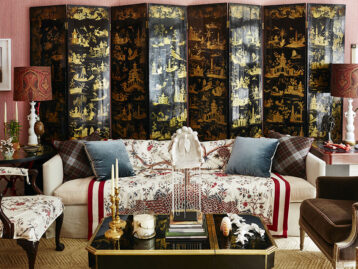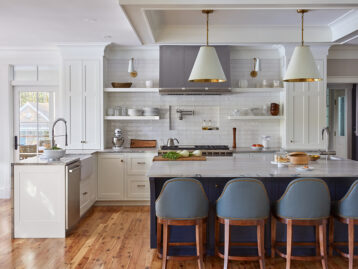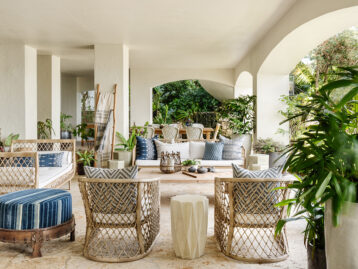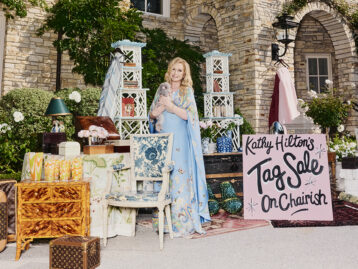Washington, DC is a uniquely American type of town. Meticulously planned as the nation’s capital, it’s evolved into something more, particularly over the past few years. No longer just a “company town,” DC plays host to media companies, startups, a thriving arts scene, and seemingly new neighborhoods popping up with every passing year. And yes… inaugurations still happen there too.
Practically synonymous with Washington’s interior design scene is Zoë Feldman Design, a Georgetown-based firm particularly known for inventive reimaginings of historic homes. We caught up with principal Zoë Feldman to discuss how she and her team tackle these meaningful restorations while still staying true to the homes’ roots, how she got her start as a designer, where to shop and dine in the DC area, and much more.

Washington has seen a lot of change over the past few years, with new development all around the city and surrounding areas. How does that impact your work and the design community?
I attribute a lot of that to the way the city reacted to the Obamas moving into town. We saw a shift in the city culture that reinvigorated local artists, restaurants, and small businesses that emerged on the scene. In my opinion, the Obamas put DC on the map as a “hot” place to live, which lured a young and creative generation into the city. As a result, many neighborhoods started redeveloping to accommodate them. More people are moving into historic neighborhoods, looking to bring their homes back to life with a little “face-lift.”

Your firm specializes in restorations and ground-up projects, particularly in Georgetown. What’s it like working on those incredibly historic homes, and how does it differ from building something new?
I would say some of our favorite projects have been those in historic homes. Restoration projects can be challenging with HOA and city regulations, but on the flip side, they can yield some of the most exquisite design products. They allow us to flex our creative muscles by strategizing how to enhance the integrity of the architectural details while adding a modern twist with furniture, finishes, and decor.
It’s hard to get behind the ideology that we need to produce something new when we can’t find what we are looking for. Part of being creative is being able to see the beauty in a foundation and reimagining how to bring something back to life. At this point, we need to be looking to the past to get inspired and inform our decisions. Everything has already been done before. Our job is to explore ways to reinvent spaces while honoring their bones.
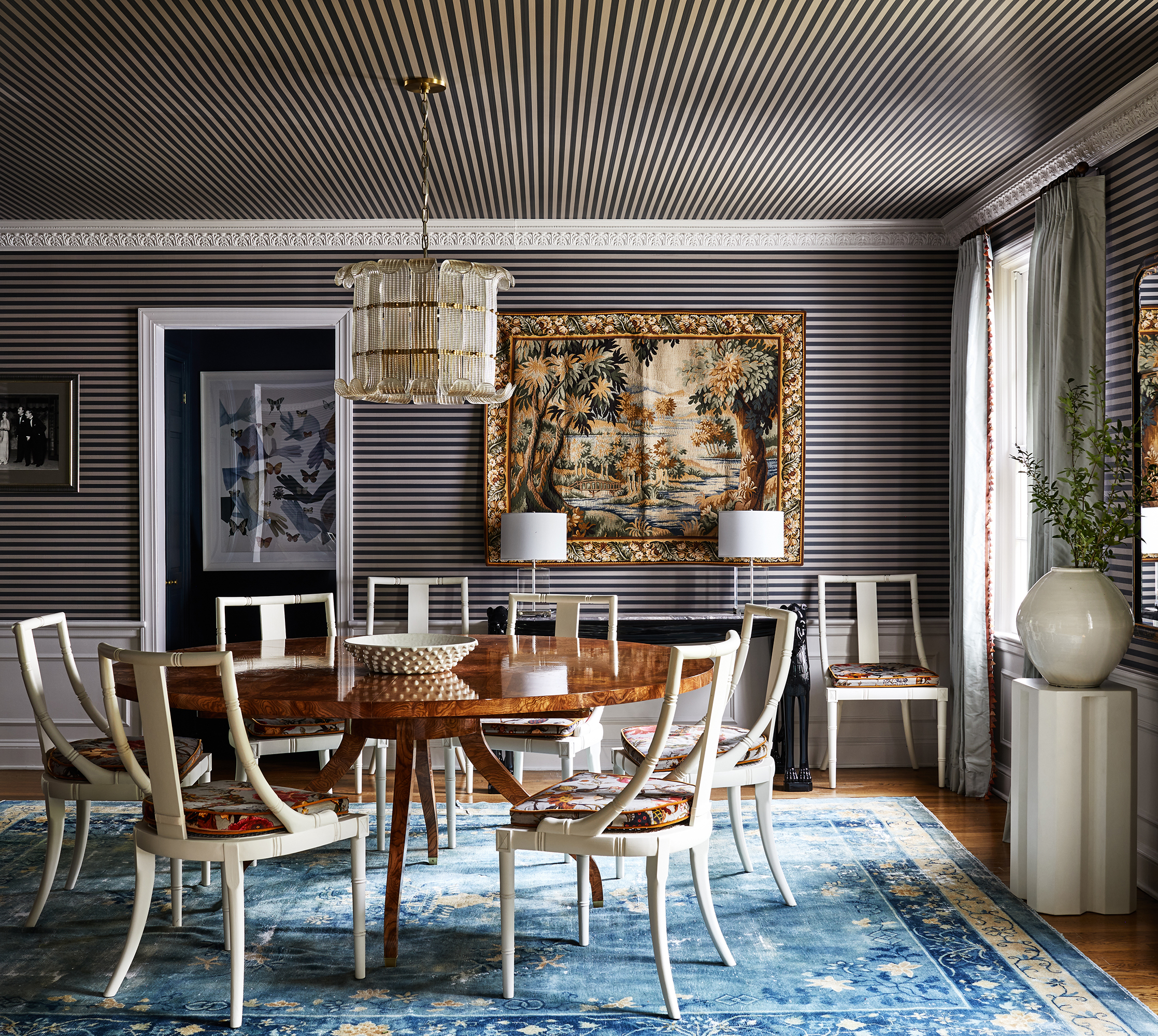
What’s something you’d want everyone to know about life in Washington that they might not already?
When compared to cities that are considered “design hubs” like New York or LA, DC feels like it gets very little love. Though the Washington Design Center cannot compare to the D&D Building or 200 Lex in Manhattan, we love that this fosters a more intimate relationship with our showroom reps. Georgetown historically has been the hot spot for designers in the city, with showrooms and antique shops scattered throughout the neighborhood. Over the last decade, large retail shops have begun to move in, which made me fear our favorite design spots wouldn’t survive. Luckily, showrooms like Design Within Reach, Waterworks, and The Shade Store have stuck around and we are very happy to be within a stone’s throw away from all of them.

I know there are probably dozens, but what are a few of your favorite must-visit design resources and restaurants in DC?
Furniture & Antiques:
- David Bell is a few doors down from our office and has a beautifully curated collection of antiques that are all hand selected.
- Good Wood is located in the 14th / U Street area and is the perfect place for everything from vintage accessories to a mid-century piece to Persian rugs and runners.
- Miss Pixie’s is also located in DC’s 14th / U Street area with amazing mid-century finds.
- Lucketts Market in Lucketts, VA; I have found some of my favorite pieces sifting through these kinds of flea markets and even estate sales.
Art Resources:
- DTR Modern
- Susan Calloway
- We love to use art from Tenley Masson, who is one of the designers on our team for a lot of projects. She has a background in fine arts and her figure drawings and watercolors are scattered throughout our portfolio. Specifically in this project, we used some of her work on the living room fireplace mantel, which adds layers and dimension.
Restaurants:
- I mean, I love a good sushi spot. Sakana is one of my neighborhood favorites that is non-descript, which I think oftentimes is where the best food can be found.
- Located right down the street from our Georgetown office, Cafe Milano is one of our go-to spots. We often find ourselves there for an office happy hour where the drinks are great and the design is just as curated as the menu.

You have clients in DC, New York, the Hamptons, Florida… how does your work differ for those varying locales? How do the clients differ?
Working with clients across the country presents its own different challenges and requires a unique approach. When it comes to working in bigger cities like New York and DC, those projects are typically smaller space living, but when we’re working in more suburban areas like Florida and the Hamptons, the homes typically have larger footprints with more spaces to fill. We often encounter size restrictions when working on city homes so it’s our job to get creative with how to maximize function without sacrificing the overall design of the space. The context of our projects plays a huge role in the concept development and also where we look to find inspiration.
You started out working for Alexa Hampton in New York. What are some of the things you learned from her early on?
Alexa is brilliant and she knows more than could ever be taught. So on one hand, I had this person who would speak to me as though I knew these words or about these things that she’d grown up around. But taking decorative arts classes at Parsons allowed me to put context to it — so when she was talking about an Empire piece, I could connect it to what we were studying. I very much credit Alexa, because she did something for me that was so important. There are pivotal moments in your career, and obviously getting a job there was, for me, probably the most pivotal moment.
But there was also a moment where she told me—not verbatim, but she basically said, “You really have it, Zoë. You have that thing that can’t be taught.” At the time, I was feeling very insecure because of my minimal training and minimal exposure growing up. I don’t think she knew I was feeling that, but that moment gave me a lot of confidence. Even though I maybe wasn’t where I wanted to be and didn’t know everything, I had a natural ability that she was able to see — and that fueled me, in a lot of ways, to keep working toward my goal.
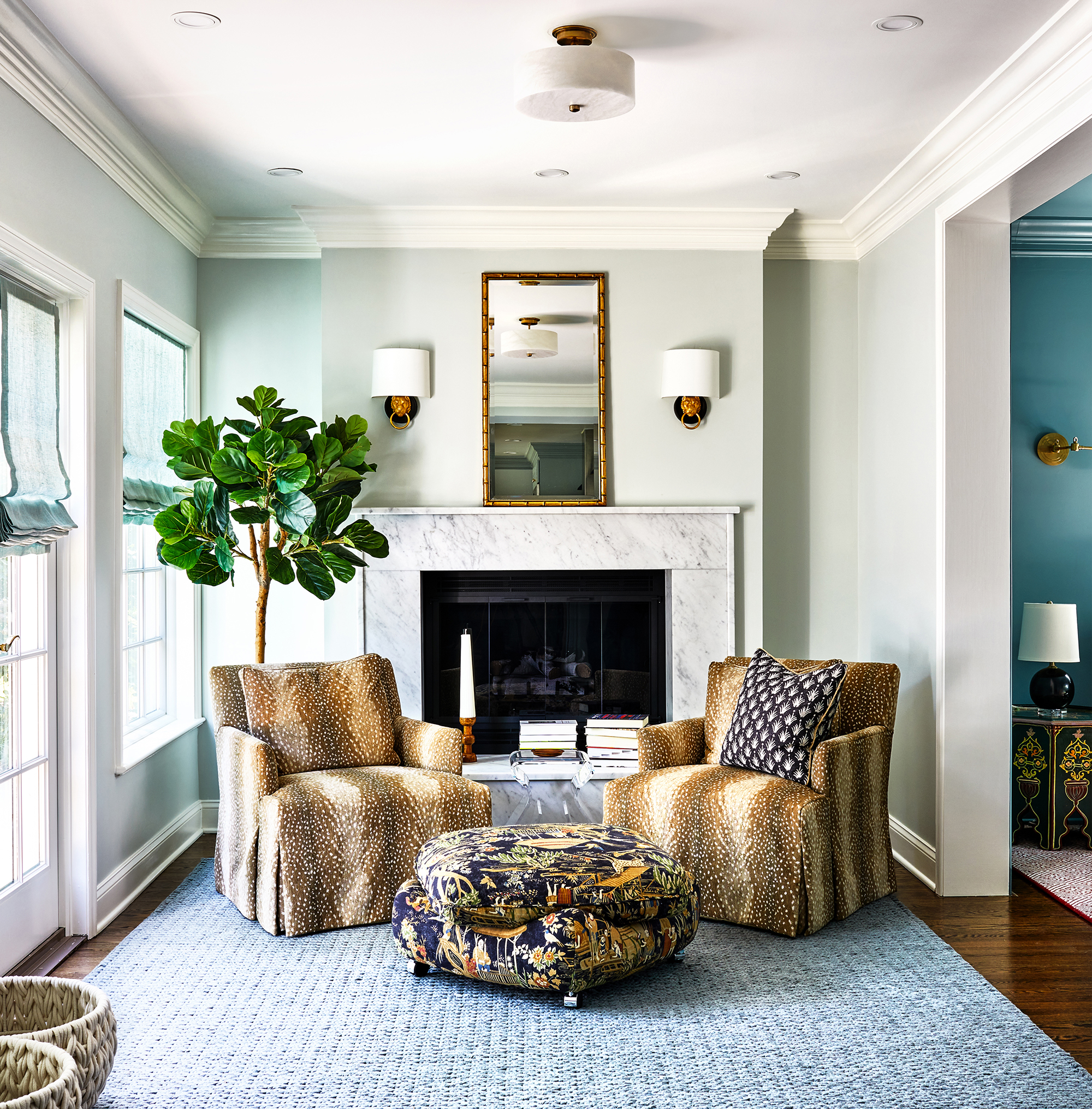
I know you’re particularly dedicated to environmentalism and donate your original site visit fee entirely to green charities. Tell us a bit about some of your green initiatives.
I was inspired by my dad, who is a periodontist. Instead of charging new patients for an exam, he started asking them to donate to one of several local charities — and then he matched their donation. That inspired me. We charge $250 for an initial consultation, and the client chooses one of four environmentally focused charities to donate that money to. We partner with four charities — it’s changed a bit over the years, and we evaluate if we’re going to keep the same four or bring a new one in at the end of each year; right now, one is a local charity and the other three are national organizations. Then if they sign with the firm, we match the donation. We also plant 100 new trees at the close of every project and quarterly, based on our sales, with Eden Reforestation. So far we’ve donated nearly $20,000 to charities and have planted almost 4,000 trees since we kicked off our sustainable initiative in 2018.
In terms of our team practices, we are lucky to have a team that shares the same passion for sustainability and charitable causes. We love to participate in upcycling in the office to reduce our carbon footprint, sourcing vintage first, and participating in team events like climate marches or local trash pick-up.

Shop the Style
Product_id 2434232 not found
Speaking of shopping green… you’re a Chairish shopper and a vintage lover. What are some of the best things you’ve found on Chairish, and what are some of your most frequent searches?
As a team, we always start the design development process by sourcing vintage first. Not only do these pieces add character and personality to a space but it’s also an ethical and sustainable approach in our design practices. Finding the beauty in something that has had some time in this world is very important to us. We often find ourselves getting creative with how to repurpose pieces with our ZFD twist to make them feel more relevant while respecting the original design intent.
They create a story within a room that feels collected and curated. As designers, we love getting to know our clients on a very personal level. Oftentimes, meetings later in the day can end with a glass of wine and nonsense banter. But we love that! Truly understanding who our clients are is pivotal in creating a space that reflects them at their core. Every client is different, and for that reason every project yields a different product. At the end of the day, our goal is to design something that feels authentic and there is no better way to do so than with vintage & antique pieces.
In the living room of this project, we’ve included an image that illustrates an approach that we find ourselves implementing into most of our projects. Both the mahogany Italian secretary and the mid-century Italian ‘Chiavarina’ brass chair were sourced from Chairish. We knew we loved these pieces from the moment we saw them but wanted to give them a little flair. We used a blush toned paint color from Clare as a pop of color on the interior of the secretary as a fun “party trick.” With the chairs, we wanted to create layers with patterns on the window treatments and this Lee Jofa “Mulberry Wild Geese” linen immediately spoke to us.
We urge people not to stress about sourcing vintage for every piece in a room — this can be overwhelming and sometimes there’s a need for a custom piece for sizing restrictions or an in-stock item from a more affordable retailer due to budget restraints. If you’re able to select even just a few pieces in your space, you are already being more mindful than most. Our mission is to leave the world more beautiful than how we found it, and with ethical sourcing practices, any designer or homeowner can play their part in contributing to this closed loop cycle.

Any Chairish pieces you’ve got your eye on right now?
I love these Undulating ‘Méandre’ Wrought Iron and Glass Consoles by Design Frères; this Circular Undulating Smooth Plaster Shell Pendant; this Studio Made Post Modernist Steel Cocktail Table; and this vanCollier Hulot Console Table.
Finally, with light (hopefully) at the end of the tunnel, what are some of the things you’d like to accomplish in 2021, and where are some of the places you’d like to travel this year when it’s possible?
Is travel still a thing? Before Covid-19, I spent a week in Morocco and Portugal for a friend’s birthday and absolutely fell in love with all the architectural details. From the archways to the intricate mosaic tilework to the saturated color palettes, I found it all very inspiring. When I was in Portugal I happened to come across an antique tile shop that repurposed glazed tiles from the 16-, 17-, and 1800s. It really made me step back and think about the past, when everything was handcrafted with quality and care.
For 2021, we are really strategizing on how to expand our give-back program and hoping to resonate with other small businesses that are working towards the same goal to protect our beautiful planet.
Lead image by Stacy Zarin Goldberg












